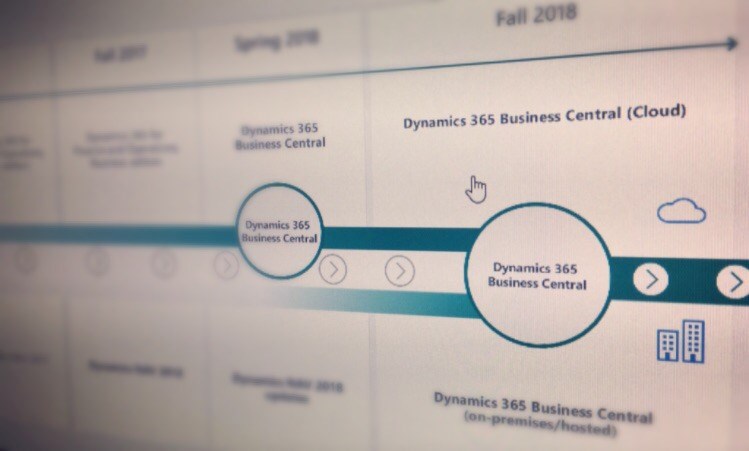Microsoft Dynamics NAV in evolution
Microsoft Dynamics NAV in evolution: from Dynamics NAV to Dynamics 365 Business Central

A great vision that becomes reality
Microsoft has strengthened its leading position in business solutions for companies with the launch of Dynamics 365. Dynamics 365 is a business platform that brings the various ERP (Enterprise Resource Planning) and CRM (Customer Relationship Management) entities together in one easy-to-use and integrated solution for business management applications.
Many new options with Dynamics 365
In the spring of 2018, Microsoft introduced the cloud version of Microsoft Dynamics NAV and then announced that Dynamics 365 Business Central would be the new name. Dynamics 365 Business Central includes all functions of Microsoft Dynamics NAV and is available both on-premise and in the cloud.
But what does it actually mean? What are the consequences for you? And what do you do best?
1 - Dynamics 365 Business Central available both on-premise and in the cloud
Dynamics 365 Business Central is based on the same code as Microsoft Dynamics NAV 2018 and has the same features. As per annual custom, Microsoft also wants to give the solution a boost and has launched a number of smaller novelties. The solution is now also available as a pure cloud version to which the apps are connected. A version that is hosted on your own servers is also possible. Specific adjustments with apps are then possible in the form of extensions, as is already possible today.
2 - Easier to upgrade with Business Central
Microsoft has been working on a concept for extensions in recent years. Adjustments are placed in separate modules (extensions) and no longer in the basic code. With extensions it is much easier, faster and safer to upgrade custom versions of Dynamics 365 Business Central (both locally and in the cloud). For the time being you can still do traditional developments in the on-premise version of Dynamics 365 Business Central. But in the long term that will no longer be the case. Upgrades to the cloud version take place more often and automatically.
3 - With Business Central you get better integration and more digital intelligence
Even if you don't choose the cloud edition of Dynamics 365 Business Central, you can still enjoy data in the cloud. This way you can run the on-premise version of Business Central in a hybrid version: the data (or parts of it) is then copied daily to the cloud. For example, Microsoft can easily deploy "Intelligent Edge" so that "Intelligent Cloud Insights" can be provided with programs such as Power BI and other Artificial Intelligence solutions.
4 - With Business Central you can still buy and rent your license, but always with named-users
You can still buy or rent a license. The difference is in the users. Where in the past competitor users were purchased and named users were rented, in the future only named users will be used. The license for simultaneous users will therefore disappear. Also, the cloud edition of Dynamics 365 can only be purchased as a monthly subscription per user, while the on-premium version can be rented or purchased. If you already have a NAV license and want to switch to the cloud edition of Dynamics 365 Business Central, Microsoft is offering a discount on the monthly subscription. When you are ready to become infrastructure independent, it is now much easier.
Do you have questions? NORRIQ is ready to help
The options with Dynamics 365 and Dynamics 365 Business Central are numerous. Business Central still has its roots in the well-known and proven Microsoft Dynamics NAV. If you want to know more about specific options in your organizations, contact NORRIQ so that we can give you tailor-made advice.
